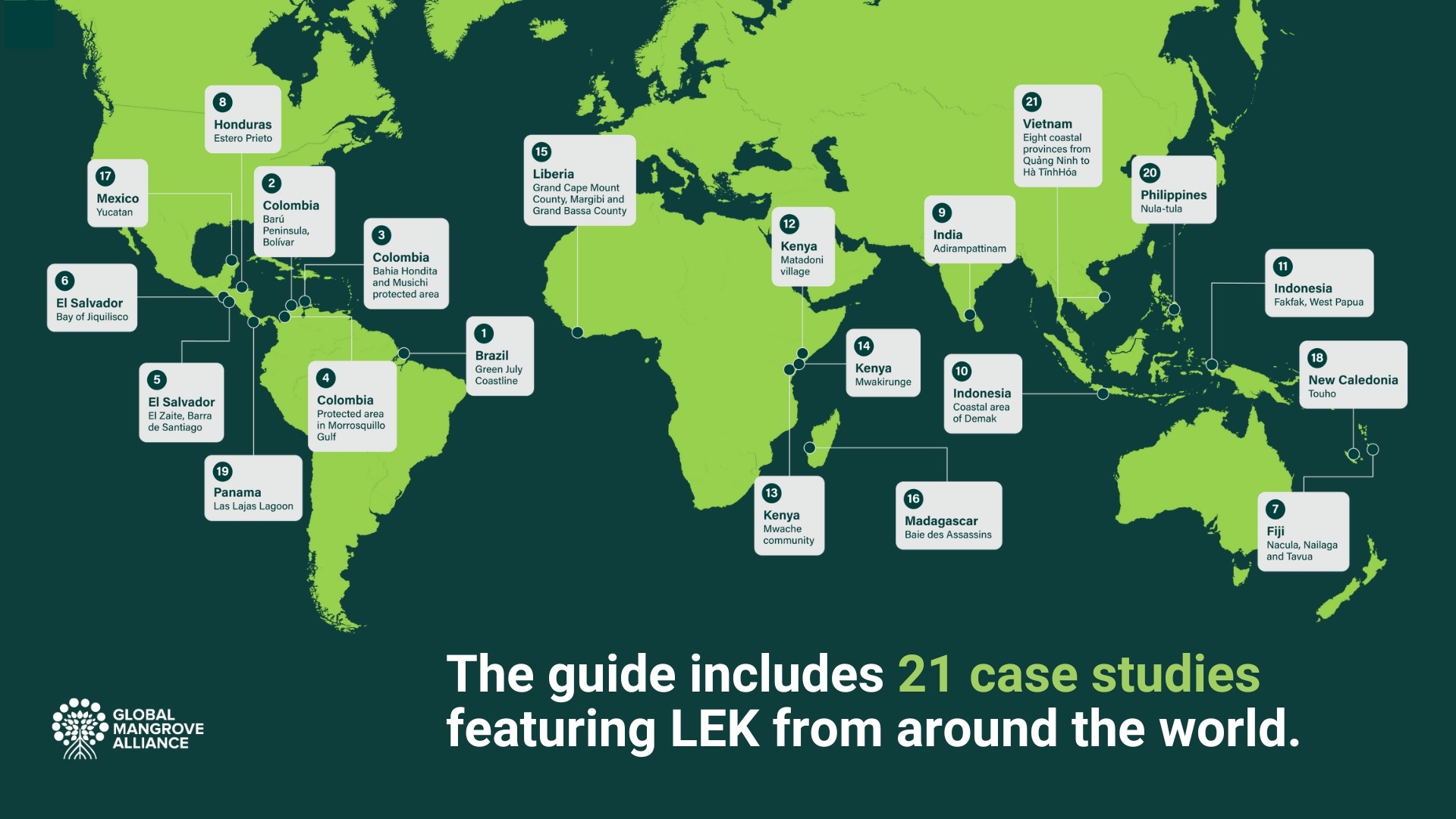World Wetlands Day 2025
The One Year Anniversary of "Including Local Ecological Knowledge in Mangrove Restoration & Conservation."
This year’s theme is “Protect Wetlands for Our Future.” Mangroves are at the heart of nature-based solutions to accomplish this.
For over 50 years the global community has celebrated World Wetlands Day in honor of the signing of Convention on Wetlands (Ramsar Convention) in Ramsar, Iran, on February 2, 1971. This year’s theme is “Protect Wetlands for Our Future.” When looking to protect our future, mangroves are at the heart of nature-based solutions. Mangroves are a critical coastal wetland as they are among the most effective ecosystems for both carbon storage and sequestration.
With growing interest in conserving and restoring mangroves, it is important to understand the local context where this work occurs. This year’s World Wetlands Day marks our one year publication anniversary of “Including Local Ecological Knowledge in Mangrove Restoration & Conservation.” This guide was designed to help mangrove researchers and practitioners include local ecological knowledge in their projects. The knowledge compounded over generations and held by local people is an invaluable asset.


Case Study 1: Green July
Location: Amazon Coastal Zone of Pará State, Brazil
Duration: 2021 – ongoing
Green July is a grassroots campaign supported by Rare where local people celebrate the importance of the vast mangrove ecosystems along Brazil’s Amazon Coast, strengthening the role of local community members as mangrove guardians. It is one of the world’s largest community-led movements to protect mangroves, having reached 200 communities and 3,000 members since 2021. This involved creating a “Maretório Manifesto” that highlighted traditional Brazilian wisdom.

Case Study 6: Harnessing Local Knowledge
Location: Bay of Jiquilisco, El Salvador
Duration: 2011 – ongoing
The Bay of Jiquilisco is home to one of the region’s most extensive and diverse mangrove forests. Covering over 63,000 hectares, this invaluable ecosystem earned its designation as a UNESCO Biosphere Reserve and Ramsar Wetland of International Importance due to its unique biodiversity and global significance. Since 2011, an estimated 62 hectares of mangroves have been restored across these project sites. The local knowledge and technical training made communities both beneficiaries and active participants in mangrove conservation.

Case Study 9: Reviving Mangroves
Location: Adirampattinam, Thanjavur District, India
Duration: 2022 – ongoing
Since 2022, this project has focused on the restoration and conservation of mangroves, while reducing plastic usage in mangrove nurseries and simultaneously empowering the traditional craft of Palmyra bag-making to foster sustainable livelihoods for the local community. The local community provide invaluable insights that extend to identifying threats such as erosion, pollution, illegal logging, the impact of climate change, and overexploitation on mangrove ecosystems. They also possess inherited knowledge of the medicinal uses, food sources, building materials, and cultural significance associated with mangroves.

Case Study 11: Building Kerakera
Location: West Papua, Indonesia
Duration: 2022 – 2027
The goal of this project is to enhance protection and management of mangroves. Passing on local knowledge, cultural practices, and traditional regulations has been central to mangrove conservation in West Papua, Indonesia. The project delivers several interventions through awareness raising, capacity building, and policy dialogue with local authorities including local government and tribe/traditional leaders.